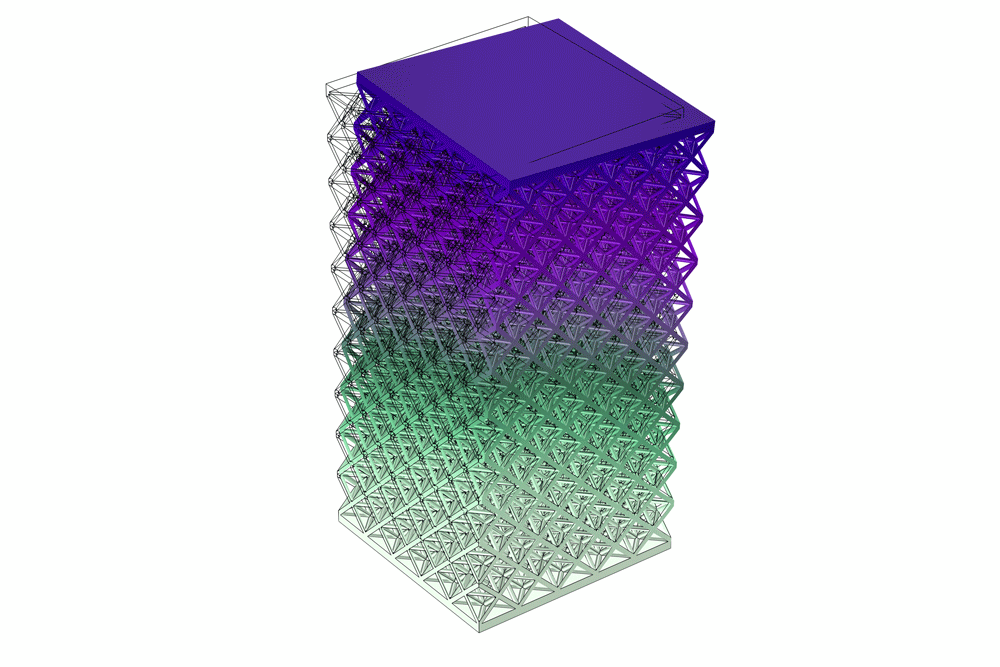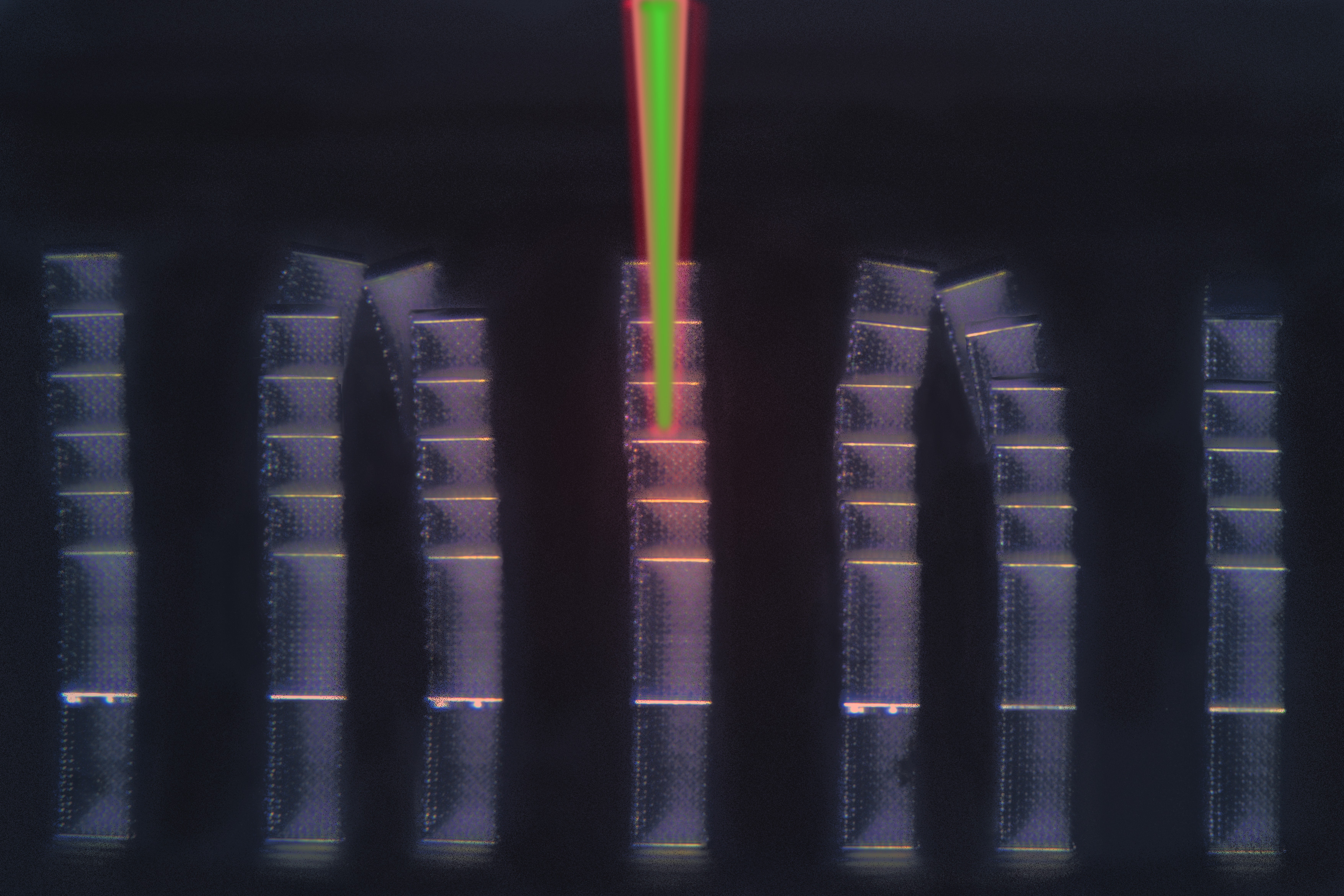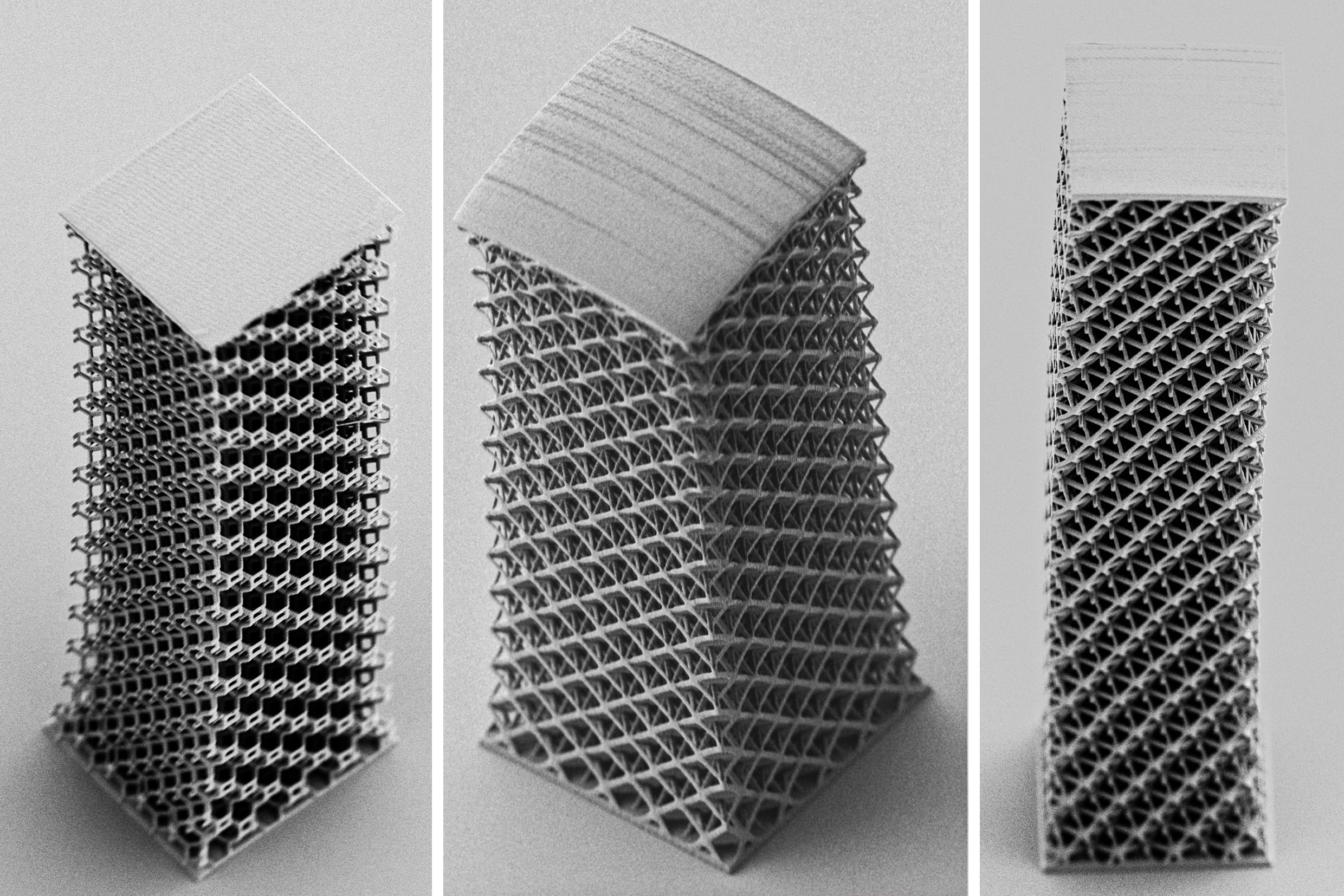Laser setup probes nanoarchitected structures

A new MIT technique uses a laser to safely scan a microscopic tower of metamaterial, inducing vibrations that can then be captured with a second laser and analyzed to deduce the structure’s dynamic properties, such as stiffness in response to impact. Image: courtesy of the researchers.

This optical micrograph shows an array of microscopic metamaterial samples on a reflective substrate. Laser pulses have been digitally added, depicting pump (red) and probe (green) pulses diagnosing a sample in the center. The LIRAS technique sweeps through all samples on the substrate within minutes. Credits: Courtesy of the researchers

This image shows electron microscope micrographs of polymeric metamaterial samples, approximately 50 micrometers wide and as tall as about twice the width of human hair, whose properties were determined via the LIRAS technique. Pump and probe lasers were aimed at the flat tops to induce vibrations throughout the samples. Image: Courtesy of the researchers

